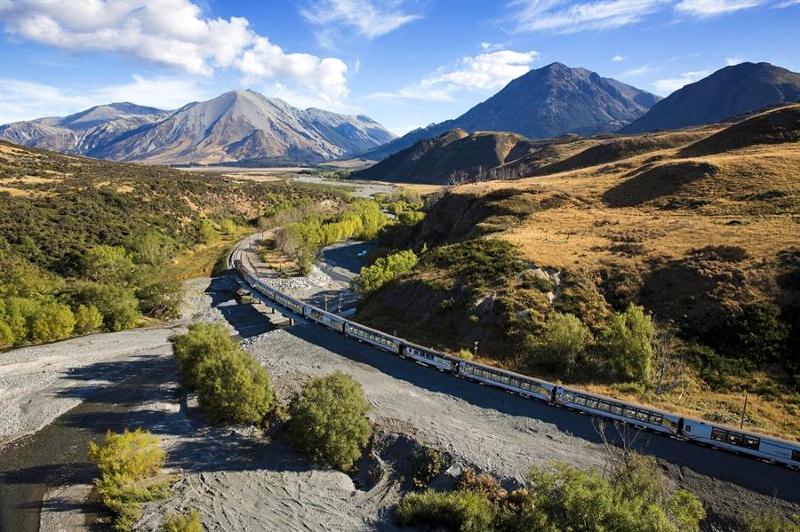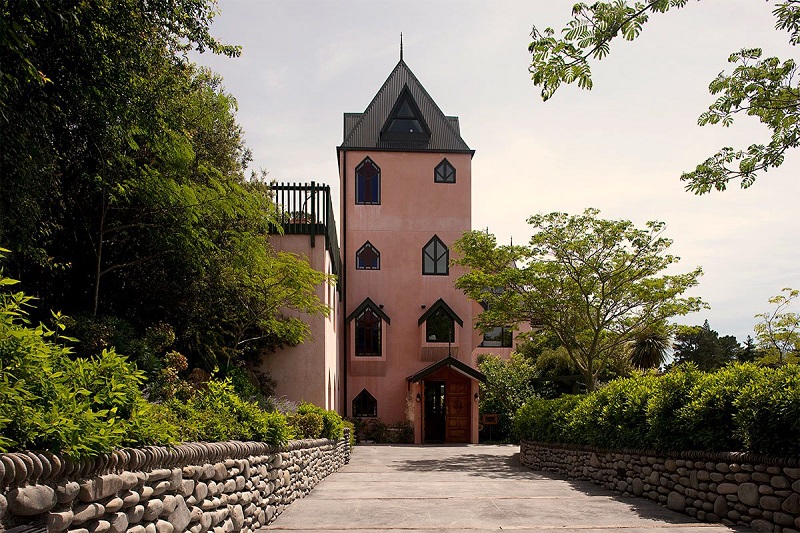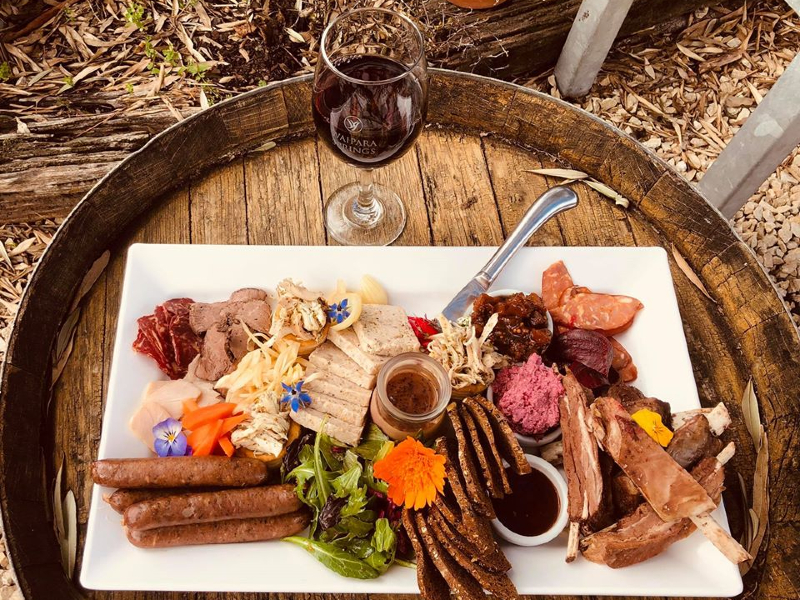
Tending to the vines at Terrace Edge (Photo: Terrace Edge Wines)
Unafraid of being pilloried, we will declare it rather loudly that the South Island, or Te Waipounamu as it is referred to in Maori, is where New Zealand’s wines shine brightest. The names of its wine regions already read like a valedictorian’s roll call: Marlborough, Otago, Nelson ... but it is perhaps Canterbury that is its most exciting yet underrated [region], which is baffling, considering its easy accessibility (just half an hour by road, plus minus) from the veddy English city of Christchurch (South Island’s largest), named after the alma mater of the city’s founding fathers — Christ Church College, Oxford.
It would indeed be to the dedicated drinker’s detriment for missing out on a day (or three), traipsing through and calling in for tastings at its portfolio of wineries — many of which are critically-acclaimed. Those looking to see the aged, gnarled vines of the Old World would be a little disappointed at first sight of the young plantings in wineries that are scattered far and wide across the vast and sweeping region, flanked by the snow-capped peaks of the Southern Alps lying west and the mighty Pacific Ocean to its east.
tranz-alpine.jpg

Canterbury is young — but most becoming. Its first plantings only date back to the late 1970s but, in keeping with Kiwi standards, is a strong flag-bearer for the riesling and pinot noir varietals in particular. Its cool, dry climate and lashings of sunshine certainly allow for depth and diversity of varietal expression. The Waipara Valley, in particular, is fast gaining a reputation as a sub-region to be reckoned with in its own right. And, in its slightly more sheltered location, shielded by the Teviot Hills and coupled with the region’s stony, alluvial terroir, it boasts its very own microclimate, allowing for near-perfect conditions to grow top-quality grapes, which are then used to make the loveliest cool climate, highly aromatic wines. Expect riesling, often referred to as the King of Grapes or the King of White Wines, to reign supreme in most wineries. As the region is expansive, some planning is required to make the most of your wine tour. But if time is of the essence, here are four splendid spots to check out.
PEGASUS BAY
img_about-02.jpg

As far as winery founders go, Pegasus Bay patriarch Ivan Donaldson is as accomplished as they come. An associate professor, consultant neurologist, wine writer and wine judge, it is no surprise that in his exceedingly capable hands, Canterbury’s pioneering Pegasus Bay is considered one of New Zealand’s best wineries. A completely family-owned and operated enterprise, Ivan’s wife Christine manages the breathtaking gardens and their four boys — eldest Matthew trained at Roseworthy and is winemaker; Edward and Michael look after marketing and sales respectively; while Paul is general manager — and spouses all play active roles. Although the wines are the undisputed star of the show, Pegasus Bay’s on-site restaurant too deserves a round of applause. Be sure to reserve a table early so you will not miss the chance to pair its wines with its equally exciting line-up of local cuisine — think Stoneyhurst lamb with smoked swede, salsa verde and local spinach or spanner crab with wild onion, macadamia and tofu.
Here, riesling’s versatility is offered via four distinct expressions, including the full botrytis Encore Noble Riesling which, to its credit, is cool, clean and sweet without being cloying in the least. One can only imagine how it would taste with a cheese board. For those who are usually members of the ABC (Anything But Chardonnay) Club, Pegasus Bay’s might just make you change your mind, serving up a cool blonde in the vein of Mr Hitchcock versus, say, a brassy Californian. The Donaldson family are also great lovers of the arts, and the winery provides an ethereal setting for many of the classical and operatic concerts hosted at its natural amphitheatre. This cultured streak shows through their wines, with names like the Prima Donna pinot noir, the late harvest Aria Riesling or the Bel Canto dry Riesling. Should you happen to be paying them a visit, we can bet you will be shouting “Encore!”.
TERRACE EDGE WINES
73252558_2811020398911210_8430222165764210688_o.jpg

Another family-owned and operated winery, Terrace Edge Wines is like a lovely little secret, whose name is whispered into your ear by your best friend forever. Spanning 92 acres with 34 under vine, New Zealand’s Organic Vineyard of the Year 2018 was, surprisingly, the happy result of a spontaneous purchase by Bruce and Jill Chapman in 1999. Formerly a sheep farm, the Chapmans began planting olive trees and, later on, grapes. The land is dotted with cherry trees, part of Terrace Edge’s organic promise, as it is a favourite of grass grubs and bronze beetles. “They like grape leaves but cherry leaves too, so we planted this hoping they will land and stay on the first thing in their path,” Bruce sighs. Begin your tasting with a glass of albariño, a rarity in the region. “Five years ago, only five wineries planted them. Now, it is accelerating in popularity and is seen as an alternative — and drier option — to sauvignon blanc.” With 2015 being the first vintage, you would notice strong rock melon and mandarin notes in Terrace Edge’s offering and is exceedingly pleasant to drink, in hot and cold weathers alike.
“We are a very small, boutique winery,” Bruce adds, “so we decided to be slightly different by planting either albariño or gruner veltliner, which we tried on a flight in the US. In the end, we went with the former as it’s just so much easier to pronounce.” Other special things to try include the Liquid Geography, Terrace Edge’s paean to the versatility of riesling and its ability to eloquently express and adapt to its respective terroir, the strawberries and cream-like Rosé and the Saint Laurent; no, it has nothing to do with the great fashion designer — but rather a varietal believed to be a wild cousin of pinot noir (Teutonic countries spell it as Sankt Laurent). Legend has it that the grape was named for Saint Lawrence’s Day as that was the very day the grapes began changing colour. So, if the idea of a bright and beautiful tipple with smooth, silky tannins excites you as much as Yves’ classic Le Smoking jacket, then be sure to try this one out.
GREYSTONE WINES + MUDDY WATER ESTATE
dsc_0002_copy_2048x2048.jpg

It could be mild dyslexia but the first thought that occurred when encountering the winery was Greystoke, Edgar Rice Burrough’s legend of Tarzan, the lord of the apes. But Africa and its wilderness is a world away from the elegant, smooth wines cultivated by Dom Maxwell, a multiple award-winning winemaker, together with viticulturist Nick Gill. Greystone, in a very short time, has firmly established itself in the top tier of New Zealand’s best names in wine and even the briefest of visits to this pretty winery will tell you why. A limestone mix of fossils, sea shells and small pebbles form the bedrock of the Teviotdale Hills upon which the vines grow, resulting in glorious expressions of several varietals, including pinots noir and gris, chardonnay, riesling, sauvignon blanc and gewurztraminer.
Greystone Wines acquired the neighbouring Muddy Water Estate in 2011, so a cellar door visit gives you the chance to sample the best of both worlds. The wines that particularly stood out from Greystone during my visit included the 2018 barrel-fermented sauvignon blanc that uses a Loire Valley variety, the 2016 Sea Star Riesling — very dry and delicious — and the 2016 Syrah, which just kept giving and giving. And although both estates sit side by side, you cannot help but notice the amazingly different characteristics. Muddy Water’s Hare’s Breath 2013 Pinot Noir proved particularly memorable as did its 2017 Sugar Daddy Riesling. Although the latter is said to be a perfect match for blue cheese, buy it simply for its name. Guaranteed to be a hit at your next dinner party.
WAIPARA SPRINGS WINERY + CAFÉ
waipara.jpg

It would appear that the Waipara Valley is a hotbed of family-owned and run wineries and the Waipara Springs Winery and Café is no different. But connoisseurs know that the plantings here are among the oldest in the country, dating back to 1982, while its first vintage was in 1989. The wine to drink here would be the chardonnay, as Waipara Springs’ chardonnay vines are on their own ungrafted roots, a rarity in the region. Now into its third generation, the winery, founded by Jill and Bruce Moore who still live on the property, has 26 hectares under vine and is planted with sauvignon blanc, riesling, pinots gris and noir, chardonnay and gewurztraminer. Fruit dominates the expression of Waipara Springs’ wines and are wonderful with food. The on-site café is particularly popular and offer a wide range of local delicacies — from Akaroa salmon, smoked eel and spiced calamari — to pair with the wines. The massive tasting platters featuring cold cuts and cheese or seafood are the easiest way to try a bit of everything.
This article first appeared on Nov 11, 2019 in The Edge Malaysia.


